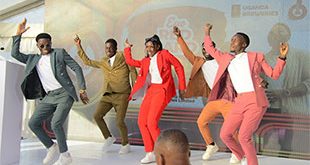
USED CLOTHES: What panic in Kenya and Rwanda’s firm stand mean for Uganda?
Kampala, Uganda | ISAAC KHISA | Among optimists, the proposal by East African Community (EAC) member states to ban the importation of used clothes by 2019 is great because it could spark the growth of a local textile industry in the bloc.
But pessimists say the move will complicate the region’s trade arrangements with leading partners including the U.S. which is also a large exporter of used clothes to the region. It could also increase the cost of clothes in countries where the majority of the population is poor and lead to the import of new cheap clothes to out-compete the very industries the regional governments seek to protect.
Faced with these options, some business analysts are proposing a middle-ground that reflects the status quo. They say the region is better off allowing entry of used clothes as it also develops its own textile industry.
“As a region, there’s need to allow entry of any products provided there are no illegalities in the sale of those items on our markets while at the same time boosting their production locally,” said Charles Ocici, the executive director at Enterprise Uganda, a USAID-sponsored agency for equipping skills to small and medium firms.
He suggests a co-existence of used and new clothes in the regional markets and the use of taxes to ensure fair competition between them.
That way, Ocici says, the burden of the ban will not only be felt by the poor but by all clothing consumers, who will, in turn, buy the locally made clothes.
He added that the co-existence will also make EAC avoid unnecessarily frictions with the powers where used clothes originate.
Isaac Shinyekwa, the head of Trade and Regional Integration Department at the Makerere University-based Economic Policy and Research Centre (EPRC) told The Independent in an interview that banning used clothes will leave the population naked.
“We indeed need to stop second clothes coming in because they are affecting the growth of our textile industries. But we cannot just wake up one day and say we are stopping it. What is in place to ensure that that gap is filled?” he asked.
He said leaders of the EAC should have developed a plan to make sure that the local textile industries can stand on their own prior to starting to implement the ban.
Already, the office of the US Trade Representative (USTR) is said to be reviewing trade benefits to Uganda, Rwanda and Tanzania under the African Growth and Opportunity Act (AGOA) after a complaint by U.S. interests about an East African ban on imports of used clothing.
USTR said recently that the review was in response to a petition filed by the Secondary Materials and Recycled Textiles Association (SMART), which complained that the ban “imposed significant hardship” on the US used-clothing industry and violated AGOA rules.
AGOA, which was extended last year, allows exporters from African countries that meet given terms, to export their goods into the U.S. without the usual tough restrictions. In turn, America also gets some preferential treatment of their products.
In March last year, the head of states in the EAC, which comprises of Uganda, Kenya, Tanzania, Rwanda, Burundi and South Sudan agreed to ban import of used clothes in the region in three years as part of the EAC Vision 2050 and the Industrialization Policy to enhance manufacturing sector that currently contributes 8.7% to the regional Gross Domestic Product to 25% by 2032. The move, however, could also harm a multi-billion shilling group of importers.
As such, Uganda, Rwanda and Tanzania have raised taxes for used clothes and offered incentives to manufactures to invest in their local textile sectors starting this financial year 2017/18.
Uganda has increased the environmental levy imposed on used clothes from 15 % to 20 % of the cost and freight insurance (CIF) value in some taxes during the post-election budget.
Rwanda has increased taxes on import of used clothes for the second consecutive year from $0.2 to $2.5 in the last financial year to US$4 per kg this financial year arguing that it intends to protect the market for new clothes made locally. In the financial year 18/19, Rwanda plans to charge $5 per kg on import of used clothes.
However, Kenya has bowed out of the plan, supposedly to save its U.S. market for new clothes produced locally in the Economic Processing Zones. Last year, Kenya is estimated to have exported US$ 394million worth of textiles and apparel to the USA under AGOA.
But Uganda, Rwanda and Tanzania say they will not back away from their plans due to pressure from local and foreign business firms at the expense of their local textile industries.
Matia Kasaija, Uganda’s minister for Finance, Planning and Economic Development told The Independent that the government took a decisive position to protect its local textile industries and thus will not bow to pressure locally or internationally to remove the imposed taxes on used clothes.
“We are not going to back away from our plans to ban used clothes in this country because few business people in the US or Uganda are interested in the business,” he said.
 The Independent Uganda: You get the Truth we Pay the Price
The Independent Uganda: You get the Truth we Pay the Price



